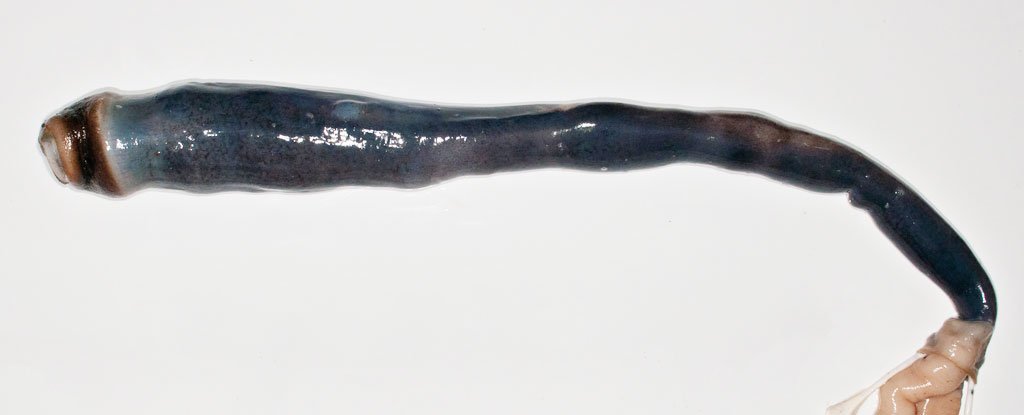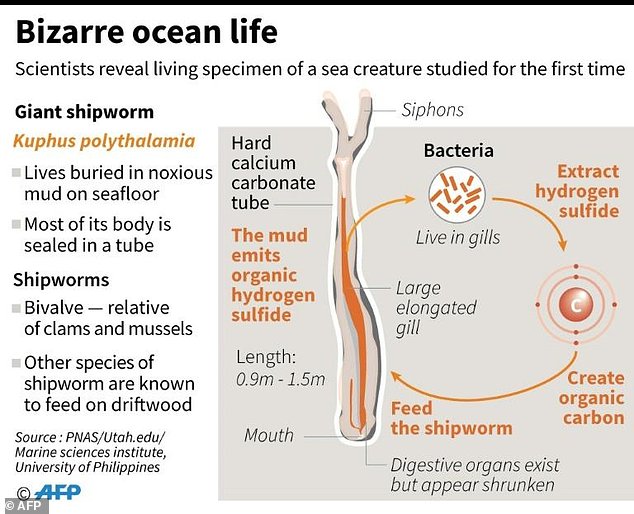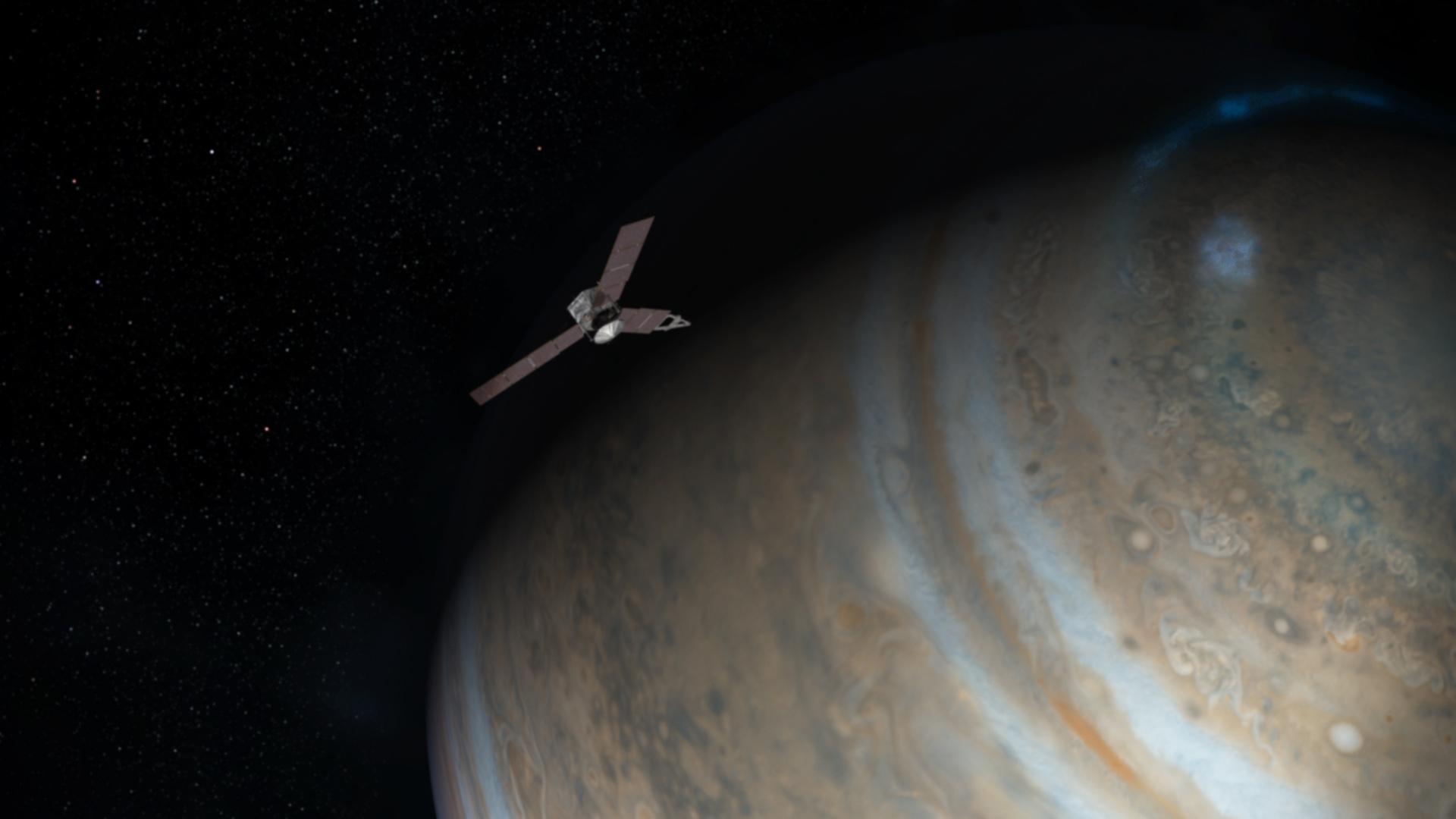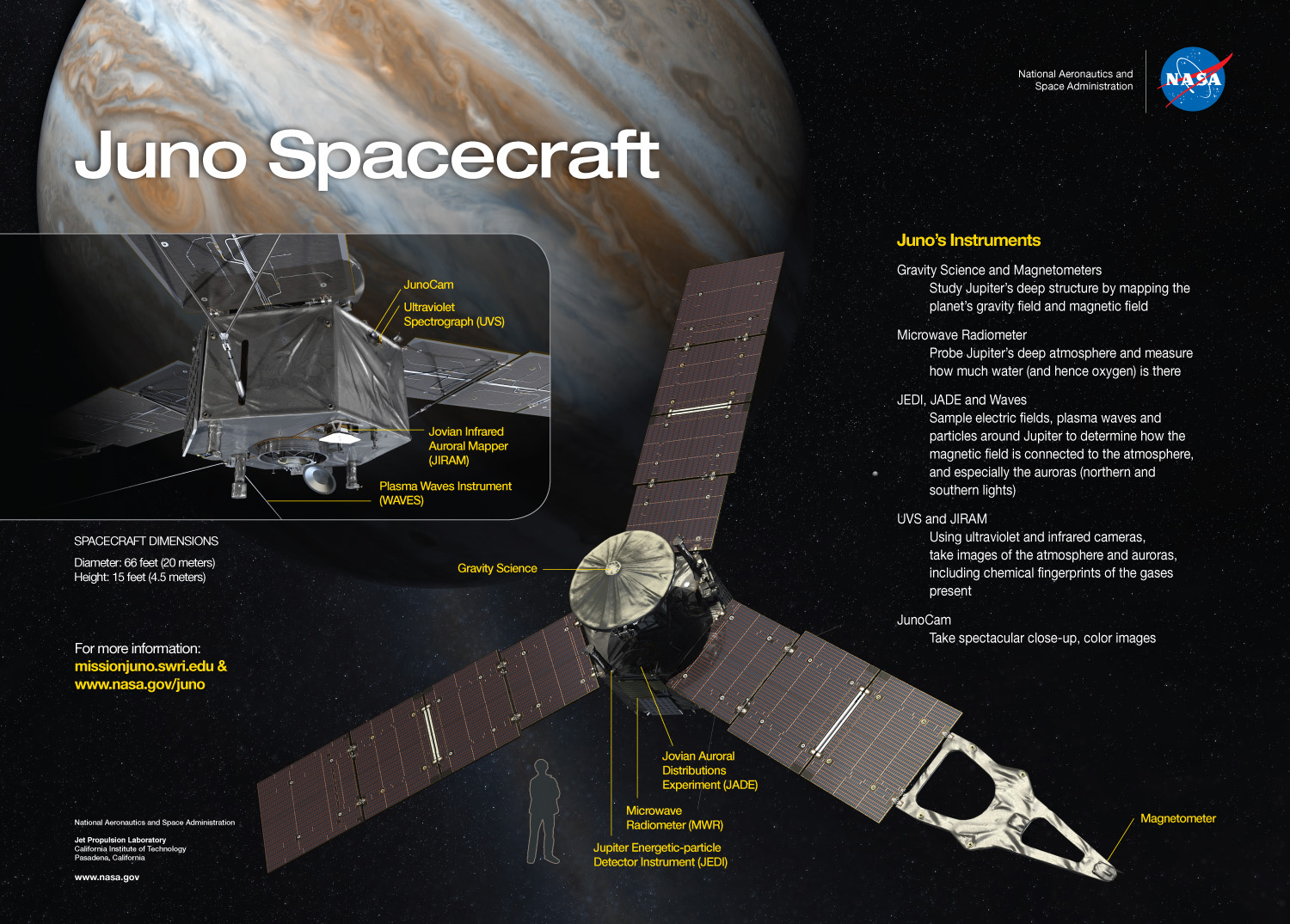You are currently browsing the tag archive for the ‘giant’ tag.
Today’s news contained an astonishing (albeit rather sad) piece of news concerning the Tetraodontiforme order of fish.
In December 2021, a dead giant sunfish (Mola alexandrini) was discovered in the ocean off Faial Island (which is part of the Azores–a Portuguese archipelago in the Atlantic). “Giant sunfish” is the common name for this sort of sunfish–but this time it was more than a name. The dead fish was enormous. When scientists dragged it to shore and weighed it with a special forklift, they discovered it had a mass of 2,744 kilograms (6,050 pounds), which means it is the largest teleost (bony fish) ever recorded (although, obviously, some long extinct fossil species were much larger). The fish was 3.59 meters long and had a huge blunt contusion on its head which was clearly caused by a boat collision (as evinced by the fact that there were fragments of boat paint on the affected area).

Scientists are still studying the specimen (indeed, they only just released word of it to the world) and a full necropsy has not yet been performed to determine the cause of death. Perhaps a boat hit the fish after it was dead. Still, it doesn’t take Hercule Poirot to start connecting the dots (which is to say, I have a feeling the fish was killed by a fast moving boat–a fate which is all to common among the larger and faster rorquals). The death of this giant is a tragedy in its own right. Yet it is stunning to me that we only just found the largest specimen of bony fish on record. The ocean still abounds with life and miraculous secrets. It could recover… if only humankind would allow such a thing!

A few years ago, I wrote about Mola alexandrini’s close relative Mola mola, the ocean sunfish (which I misidentified as the world’s largest bony fish). Obviously I was mistaken! However that post summarizes what we know about the way both these pelagic giants live. It also addresses baby sunfish–for both species go through a larval stage when the 2 millimeter long babies (!) drift around as part of the plankton. Weighing less than a gram, the li’l baby sunfish are spherical and covered with translucent triangular spikes to deter predators. The sunfish got its name because it likes to sunbathe near the ocean’s surface (another piece of evidence in determining how the Azores giant specimen met its end), however, I think the little ones actually look like the suns drawn in Renaissance woodcuts.
I will keep you updated when (or if) we learn more, but in the meantime I hope you are struck with wonder by these magnificent denizens of the ocean (and, if you are a boater or mariner, I hope you drive your vessel with care and consideration).

There is an exciting new development in the world of aerospace! This weekend, the world’s largest plane flew for the first time. The plane is a colossal megajet with six engines and a 117 meter wingspan longer than a football field (or a soccer pitch). For years the start-up aerospace firm Stratolaunch has been out in the Mojave Desert working on a giant plane to use as an orbital launch platform. On Saturday (April 13, 2019), the Stratolaunch carrier aircraft successfully left the ground and cruised up to an altitude of 4500 meters (15000 feet) before returning safely to the ground and back to its immense hangar.

The plane is designed to serve as a flying launchpad for firing satellites into low Earth orbit. By carrying the satellites and their rockets to the edge of the atmosphere, the Stratolaunch will eliminate costly and resource-hungry rocket stages. The company was founded by Microsoft co-founder Paul Allen. It is one of the few examples I have seen of billionaires squandering their money in an appropriate fashion (come to think of it, Bill Gates’ humanitarian foundation is another of those rare examples…maybe those guys did know something).

When I was growing up, every picture of a newly developed airplane filled me with covetous awe; yet, for the last decade, that feeling has been missing. Every new plane has looked like a blander (albeit more fuel efficient) version of a previous model. Even the budget-devouring F35 looks kind of like an uninspired GIJoe toy and lacks the hot lines of an F14 or even an F111 (although, admittedly, the F35 has thoroughly demonstrated its awe-inspiring ability to destroy money more quickly and effectively than any other warplane). Yet the Stratolaunch changes all of that. For the first ime in a long time, this plane is weird and exciting. Just look at the tiny twin cockpits like angry little prairie falcon heads, or cast your eye on the hunched up fuselage and the sequential rows of landing gear. I would be proud to run through the neighborhood waving a plastic model of this plane over my head and screaming until I tripped on my shoelace. Additionally, the plane finally shattered an aerospace record which has stood since 1947. The wings of the Stratolaunch are longer than the wings of the Spruce Goose, the magnificent flying white elephant which Howard Hughes built out of wood (in order to work around a wartime aluminum shortage).

Congratulations to the Stratolaunch team and to the late Paul Allen. Ferrebeekeeper will be watching the skies over the Mojave with our fingers crossed to see how the next test missions go.

Has anyone noticed the rash of giant snake attacks in Indonesia? These alarming stories of giant snakes follow a very ancient (and horrifying) narrative pattern: a lone villager or traveler chances across an enormous predatory reptile from 20 to 30 feet in length. Mayhem ensues. Usually the human survives and fights off the monster with a machete (or with aid from a torch wielding mob), but sometimes the human vanishes…only to be found being slowly digested inside a reticulated python.
Taken from an individual human perspective, it is hard not to think of the pythons as the insatiable villains of such stories, but the real narrative is more complicated. Palm oil is made from fruit of the palm oil plant, a tropical generalist. Not only is this oil a lucrative (and delicious) additive to desserts and other processed foodstuffs, it is also extensively used in cosmetics, shampoo, and soaps. Indonesia has the third largest rainforest in the world, but palm oil growers are destroying these forests at an unprecedented rate. Indonesia’s tropical rainforests are vanishing even more quickly than the rainforests in Brazil or the Congo. These forests are cut down and replaced with palm oil plantations, enormous monocultures where most traditional rainforest animals cannot live, however rats can and do live there on the oily palm fruit. The pythons are hunting rats in these plantations because their forests were destroyed.
Humankind the great hive organism is swallowing these forests whole (in the form of delicious candy and aromatic toiletries). The animals which live there are likewise being eradicated. Indeed the most recent giant python to attack a villager who molested it was literally cut into pieces, fried, and devoured by hungry villagers. It makes one wonder if the Saint George and the Dragon pictures were not so much about humankind surmounting evil as about the tragedy of deforestation in medieval England.

When it comes to mollusks, people talk a lot about the charismatic giant squids and giant clams (and for good reason!), yet, to my mind, these are not the strangest—or even the most elusive–giant mollusks. Scientists have long sought a very different creature—the giant shipworm (Kuphus polythalamia)—which they knew from its bizarre meter long tubal shell. Yet despite the fact that such shells were (relatively) plentiful—marine biologists never found a living specimen…until this spring, when internet clips revealed footage of people eating huge shipworms in the Philippines. Researchers were thus led to a remote lagoon in the archipelago where at last they discovered living giant shipworms flourishing in the foul muck. What they then discovered was the most shocking thing of all…

But first let’s provide some context. Shipworms are bivalve mollusks (like clams, oysters, and mussels) which eat wood–a surprising amount of which finds its way into the oceans. Wood is extremely difficult to digest, since it contains lignins, cellulose, and such like tough organic polymers. Shipworms digest wood the same way beavers and elephants and termites do—with help from symbiotic bacteria. This made shipworms the bane of pre-industrial mariners (who counted on intact wooden hulls in order to remain alive).
But shipworms are small, and the giant shipworm is…giant. The fact that the giant shipworm is an insane 130 cm long cylindrical clam with a gun metal blue body and obscene flesh gills which lives in a huge calcium tusk the size (and shape) of a baseball bat is not at all the strangest aspect of the creature. What is most odd about this mollusk is how it eats: it doesn’t. The foul anaerobic slime at the bottom of that lagoon in the Philippines is rich in hydrogen sulfide from decaying organic matter.

The giant shipworm doesn’t eat this decomposing matter (indeed, its mouth is all but vestigial). Instead it has bacteria in its gills which live upon hydrogen sulfide. The giant shipworm survives off of the byproducts of this bacterial respiration. It grows huge off of toxic gas. This strange metabolic cycle is of great interest to scientists for what it reveals bout symbiosis, adaptivity, and metabolism. Perhaps someday it will be useful as well. Maybe future generations of explorers will love giant shipworms for their ability to live on waste product gases just as much as vanished generations hated shipworms for eating ships.

KONICA MINOLTA DIGITAL CAMERA
Ferrebeekeeper has written about the giant otter, the largest extant mustelid (which is an alpha-predator of the world’s largest river). But what about extinct mustelids? Honey badgers, wolverines, ferrets, and, yes, giant otters, are fearsome animals: was there once a giant honey badger or a huge super-wolverine?
Yes.
The Megalictis lived in North America during the Miocene. It weighed as much as a small black bear—somewhere between 50 and 90 kilograms (100—200 lbs), but it had a body (and presumably a temperament like a wolverine or a badger. Indeed, the picture I have in my “Prehistoric Mammals” coloring book (thanks, Dover!) makes it look exactly like a giant honey badger.

I wish I could tell you more about Megalictis—where exactly it lived and how. All we can say is that it was a predator…and not a lurking predator—it caught and subdued its prey by brute strength. However we do not know why it flourished (although it evolved during the Miocene “cat gap” when North America was low on the most widespread and successful mammalian predator) or what led to its extinction. Still search the internet and find some honey badger videos—then imagine if they were ten time larger! It is a formidable thought!

The Amazon is the planet’s largest river. The great waterway is very much in the news this week as the world turns its eyes to Brazil to watch the Olympics. My whole life I have wanted to visit the upstream backwaters of the Amazon and view its ecological treasures before it is all converted into strip malls and low-cost parking. Unfortunately, the developers are doing a lot better in this life than I, so I am not sure that will ever happen. Thus, instead of going to Brazil in the real world, we will go there via blog! No need for visas (I hear that Brazil doesn’t really want American visitors anyway). We can check out the amazing fish, snakes, mammals, and, um, emperors of Brazil without ever leaving the internet.
Speaking of fish, the Amazon is the home of the fearsome pirarara! No freshwater fish is more storied or more…wait “pirarara”? What the heck is that?\
The Pirarara is actually a giant extremely colorful catfish which grows to immense size (You knew I couldn’t get through these Olympics without writing about some of the magnificent siluriformes from the place with the greatest diversity of catfish….a place where catfish are actually found beneath the water table).
The pirarara (Phractocephalus hemioliopterus) aka “the redtail catfish” is the only living representative of the genus Phractocephalus. These catfish are omnivores which grow to 1.8 meters (six feet) in length and weigh up to 80 kg (180 lb). I wonder if they wear the same sized suits as me? I am being silly, of course: these catfish do not wear suits since nobody has found a pattern which does not clash with their brown backs, mustard yellow sides, and white stomach….and their bright ketchup-red tails. The pirarara should really be called the condiment catfish. The fish are popular in large aquariums, although they are so voracious that they can injure themselves by swallowing aquarium furniture and vomiting it back up.
Redtail catfish may be the last living members of the Phractocephalus genus, but there were once many species…some of which date back to the upper Miocene (13.5 million years ago). They lived throughout what is now Brazil, Ecuador, Venezuela, Guyana, and Ecuador, in the great series of lakes and wetlands which made up the long-vanished Pebas mega-wetland. The pirarara has a certain prehistoric look to it. Can you imagine the crazy color combinations which its vanished realtives must have had as they sw3am among the super crocodiles and crazy alligators of the Pebas?
 When I was growing up I used to sometimes see these huge black and white hornets which were bigger than my thumb (although I guess my adult thumb is bigger). These monochromatic monsters were bald-faced hornets (Dolichovespula maculate). They live across North America from Alaska to Texas, from Nova Scotia to California.
When I was growing up I used to sometimes see these huge black and white hornets which were bigger than my thumb (although I guess my adult thumb is bigger). These monochromatic monsters were bald-faced hornets (Dolichovespula maculate). They live across North America from Alaska to Texas, from Nova Scotia to California.
“Bald-faced” means shameless and undisguised (it is a very good phrase for 2016). These are shamelessly undisguised wasps. They are beautiful, in a sort of nightmarish alien shocksoldier way, with cream-colored mouths and ivory abdominal markings contrasting against a midnight black body with purple iridescence. They have matte black legs and smoke-colored wings. Adult wasps are 19 millimetres (0.75 in) in length and the queens are even larger. Dolichovespula maculate is not a true hornet, but rather a sort of yellowjacket wasp—predatory wasps of the genus genera Vespula.
Like the terrifying giant hornet, bald-faced hornets are predatory carnivores. They smash into the hives of other hymenoptera (like lovable honey big-hearted bees) and gobble up all of the bees, larvae, and honey. They aren’t just chaotic hunters: they are also weirdly omnivorous. Wikipedia says “They have been observed consuming meat, spiders, fruit and insects. Adults will also drink flower nectar.” What the heck? That sounds like a banquet for dark elves!
The creatures are eusocial. They band together in a hive of 300-700 individuals. Their nests are built of disturbing grey-yellow paper-type material which seems like it was excreted by a Steven King monster (which actually seems like a pretty good description for the bald-faced hornet). You are probably curious about where this bruiser falls on the Schmidt Pain Index. Although the wasps are bigger than their close cousins the yellowjackets, both creatures score the same SPI number: 2.0 (exactly in the middle of the four point scale). They also are tied with honeybees (which are smaller but pack a potent one-time-use wallop. The description of a bald-faced hornet sting is particularly poetic and sounds like a restaurant’s blurb for an autumn pie or a painful cup of coffee. According to the pain index, the sting of Dolichovespula maculate is “Rich, hearty, slightly crunchy. Similar to getting your hand mashed in a revolving door.” I am glad I gave these characters a wide berth when I was growing up…but I am glad I saw them too. They are intense animals.
Happy (belated) Fourth of July! While everyone was out barbecuing and amusing themselves with colorful novelty explosions, there was big news in space exploration: NASA’s Juno probe, which launched from Earth five years ago, has finally reached the gas giant planet and entered orbit. The robot spacecraft, which is about the size of a basketball court, is now dancing nimbly amongst the system of moons and rings and radiation belts around the giant world.
The probe is a remarkable spacecraft. It traveled 2.7 billion kilometers (1.7 billion miles) to reach the exact orbit which NASA planned for it. The secret behind its astonishing precision (even when traveling at 165,000 mph) is the autonomy of its sophisticated navigational computer. Mission controllers do not have to radio the probe from half-way across the solar system (which would take minutes—or longer. Instead the probe navigates itself. The ship computer is shielded beneath a titanium vault to keep radiation from frying its clever electronic brain.
Among the planets, Jupiter is a sort of greedy eldest child. Scientists who study planetary formation believe that the gas giant formed first of all the planets and it took the lion’s share of available matter left over from the formation of the sun. Jupiter is more than twice as massive as all the other planets in our solar system put together: indeed, it is three hundred and eighteen times more massive than Earth. Yet we know shockingly little about this bruiser. Very basic questions about Jupiter remain unanswered. For example we still do not know whether the planet has a rocky core beneath its vast colorful atmosphere.
As we learn more about exoplanets which orbit other stars, questions about the formation of solar systems have become more numerous. Astronomers have been particularly perplexed by the number of “hot Jupiters,” giant gas planets which are extremely close to their stars. Was Jupiter such a world at some point before moving to its current location, or is it a huge freak? We simply do not know. Scientists would also like to know more about the unimaginably vast cloudscapes of Jupiter. What dynamics move these huge bands of pressurized gas?
As Jupiter formed, it was bombarded by strange radiation. The depths of Jupiter’s storms must still feature giant lightning strikes. This sort of treatment can cause hydrocarbons and ammonia to form amino acids. Maybe life has a Jovian origin. Maybe Jupiter still has life floating around like aerial zooplankton. Again, we just don’t know much about the giant world…
However, now that Juno has arrived we can start to answer some of these questions. The probe will go through various start-up and test sequences until Oct. 19 when it moves to a 14-day orbit of the planet and really starts scrutinizing our giant neighbor.
Oh, one more thing—NASA has been getting better at PR to make space more accessible and “fun” for us laypeople following at home (as witnessed by the July 4th arrival). Juno also has a crew of three Lego astronauts: Galileo, Jupiter, and Juno herself. This leads me to write about Juno herself, for she is a terrifying figure among the gods. More about her tomorrow!

It’s time for a belated Valentine’s Day Post (or maybe this is actually an outright Lupercalia post). The Seattle Aquarium has an unusual annual Valentines’ Day tradition of sponsoring blind dates for their resident octopuses. Sometimes the octopuses ignore each other or even quarrel, but other times throwing octopus strangers of opposite genders into a tank together results in multi-armed passion—a special treat for the aquarium visitors (to say nothing of the octopuses) This year the aquarium has (or had) a large mature male Pacific giant octopus (Enteroctopus dofleini) affectionately nicknamed “Kong” who weighs about 70 pounds. Divers set out looking for potential girlfriends for Kong for Valentine’s Day, but the largest females they could find (um, capture) were all under 40 pounds.

This was a problem. It was widely feared that Kong might react badly to these undersized females and just straight out eat them. Mating is the final act for giant Pacific octopuses. They are semelparous (their lives end after a single reproductive event). After mating, females lay between 20,000 and 100,000 eggs which they tenderly nurture and care for as they starve to death. Males develop white lesions on their body and wander absent-mindedly into the open where they are swiftly devoured by predators.

Pacific giant octopus (Enteroctopus dofleini) with human diver
Kong is approaching this final stage of his life, but his keepers could not find a worthy adult female octopus for him to consummate his life with…so they let him go. He went back to the ocean to look for love and death on his own. Good luck out there Kong, you handsome devilfish! Let’s hope it was all worth it.
















